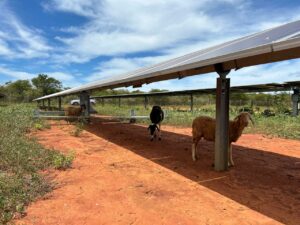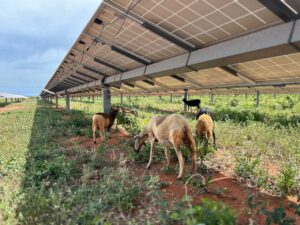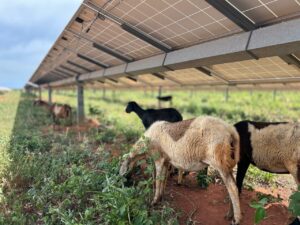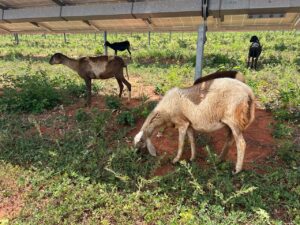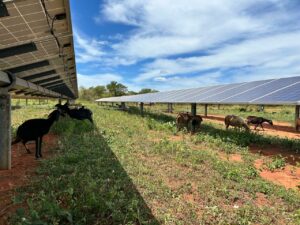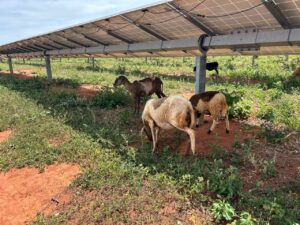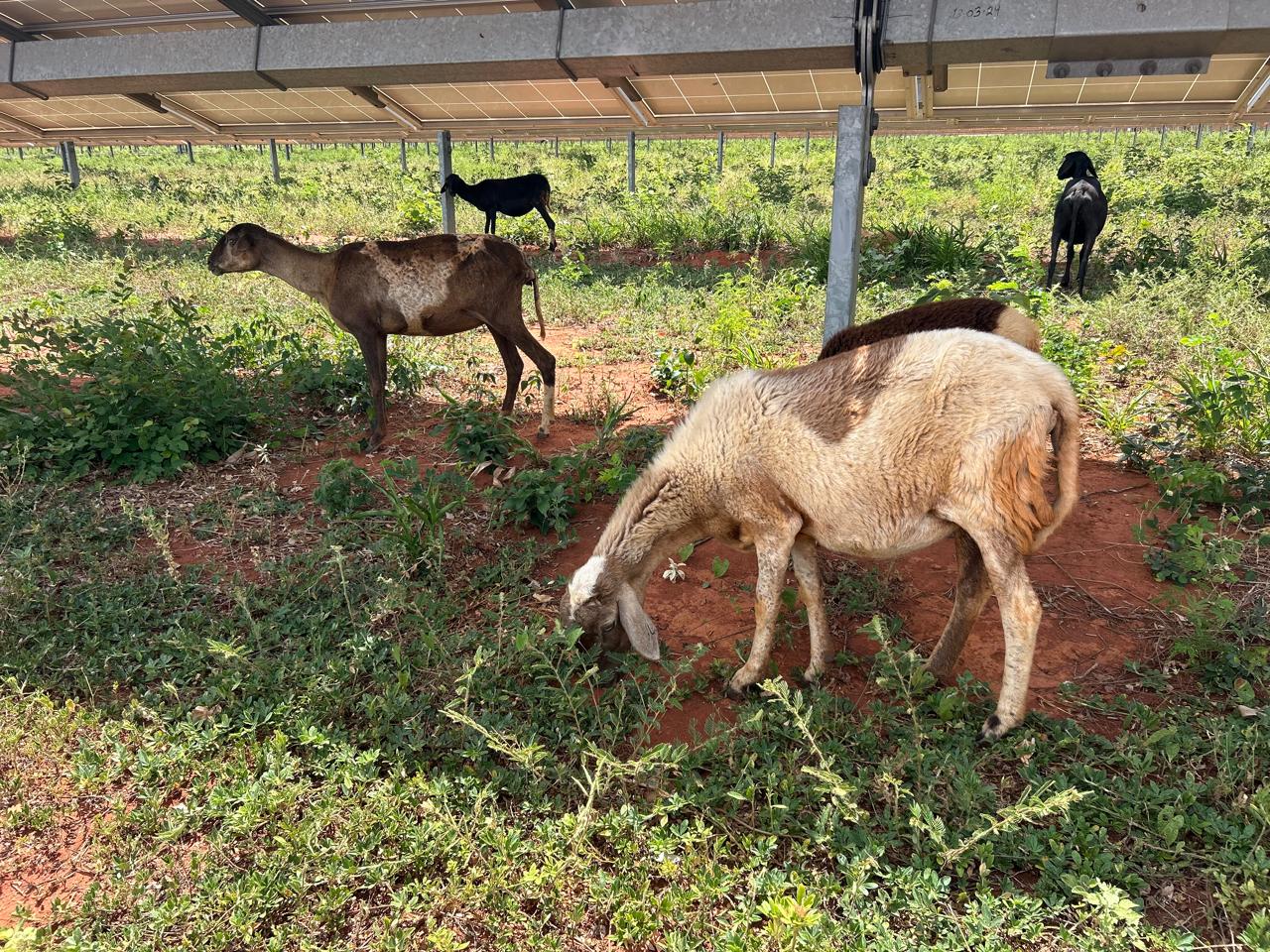This innovative and sustainable solution not only optimizes the maintenance of the facilities but also creates synergies between the energy and agricultural sectors. Through controlled grazing, this model integrates clean energy production with responsible agricultural practices, generating environmental, economic, and operational benefits.
How does the project work?
At solar plants, photovoltaic panels are typically installed on large areas of land, where herbicide or mechanical weed control methods are traditionally used to manage vegetation growth. Thanks to this initiative, sheep flocks, in collaboration with local breeders, are introduced to graze on the grass and keep it at an appropriate height.
This method significantly reduces human intervention and the use of machinery, promoting a more efficient and environmentally friendly approach.
Main benefits:
Reduction of CO₂ emissions by decreasing reliance on machinery for vegetation control.
- Sheep have access to areas that are difficult for machines to reach, allowing for more efficient vegetation management.
- Reduction of maintenance and vegetation management costs.
- The model generates additional income for local sheep breeders near the photovoltaic plant.
